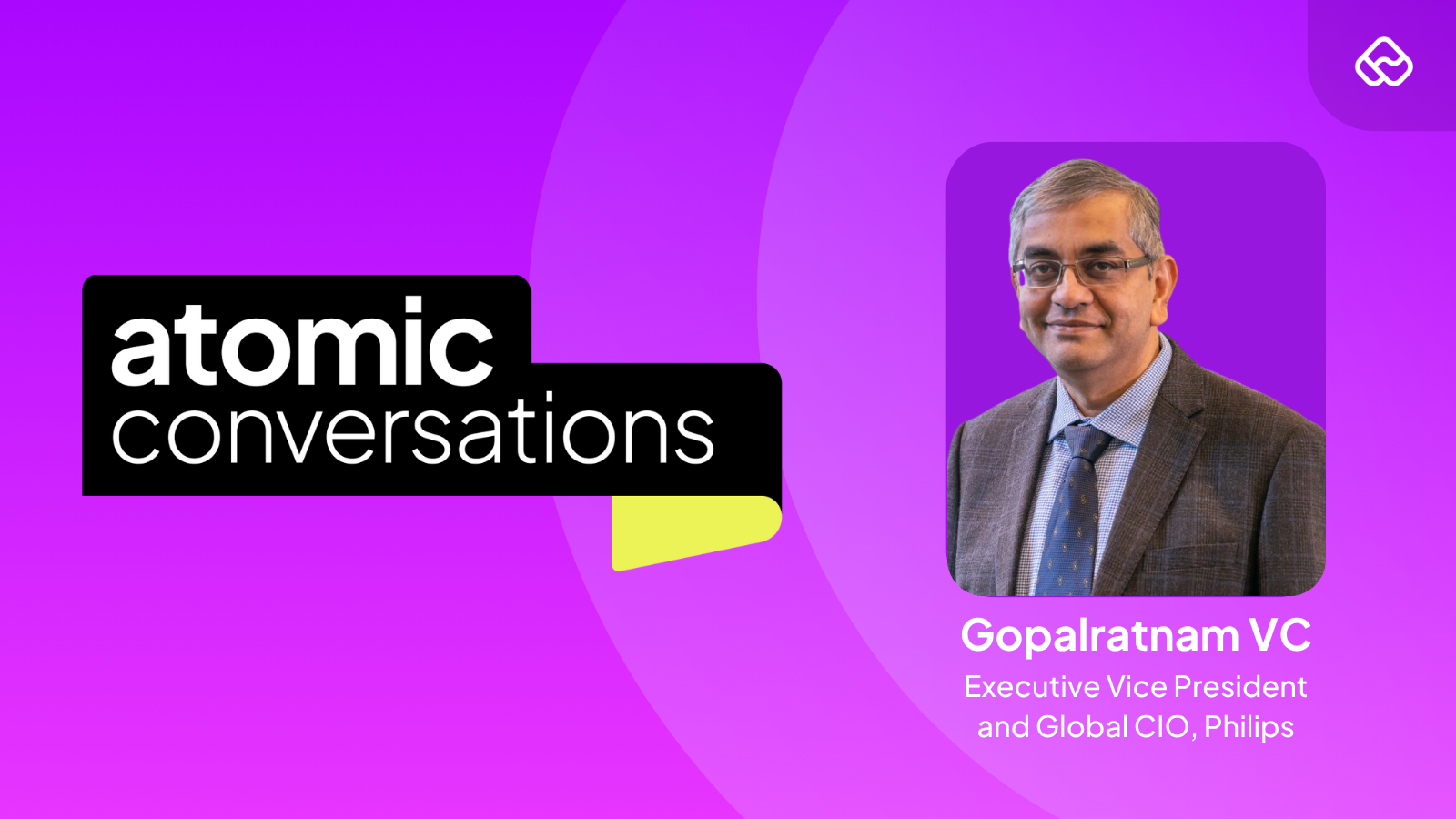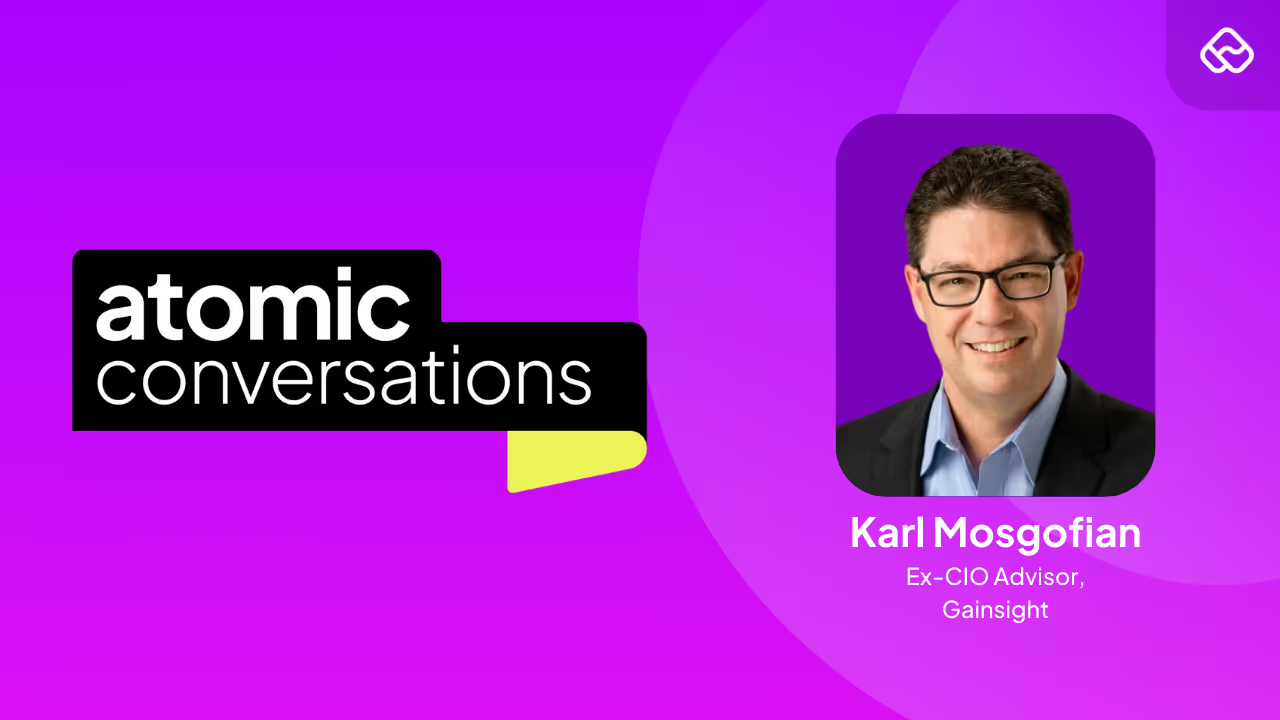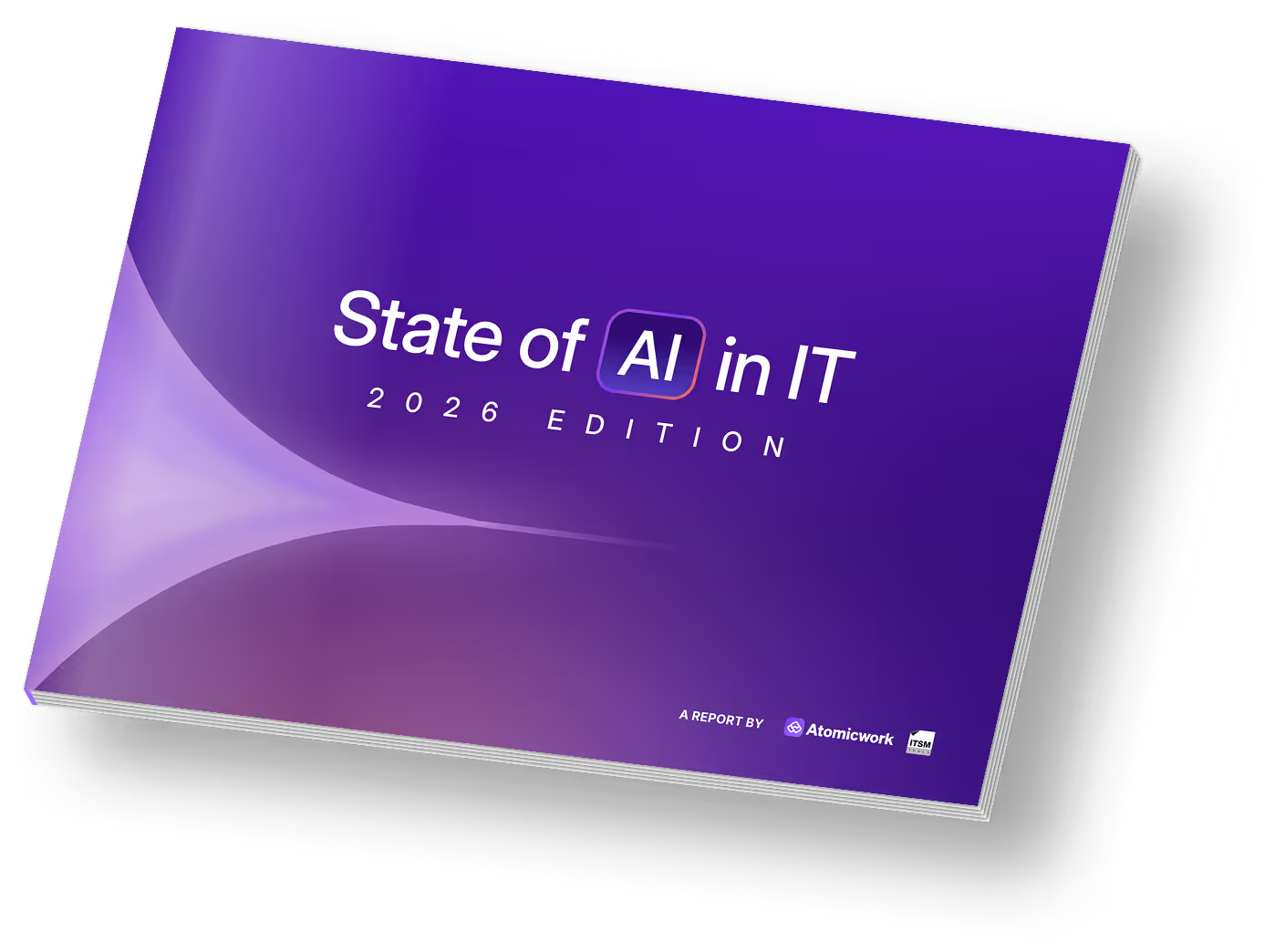Leading with values and vision: Lessons from Philips’ Global CIO Gopalratnam VC

Every once in a while, you meet a leader who reminds you that while technology keeps changing, values don’t. Hosting Gopalratnam VC, Global CIO at Philips, on Atomic Conversations was one of those moments.
Across his three-and-a-half-decade career across organizations like GE, Cisco, and now Philips, Gopalratnam’s worldview has been remarkably consistent: build with integrity, lead with empathy, and simplify relentlessly.
In an era where CIOs are asked to transform everything at once, his advice felt refreshingly human.
Watch the full episode here or scroll through for key highlights from our conversation.
5 Guiding principles for business leadership
Gopal believes that consistency and a strong value system are the bedrock of trust.
At Philips, that translates into transparency and empathy, recognizing that people are motivated by different things, but everyone seeks fairness and honesty from their leaders.
But before anything else, Gopal grounds his leadership in three guiding principles that he passes on to every team he leads:
- Don’t lose sleep over what you can’t control. Worrying about the uncontrollable only drains focus and energy that could go toward what truly matters.
- Ask “So what?” until you reach the business reason. Every action and decision must trace back to a business outcome. As Gopal put it, “Keep asking ‘so what?’ until you hit the real rationale.”
- Surround yourself with people smarter than you. “If they succeed, by default, you succeed,” he said, a reminder that leadership is as much about enabling others as it is about setting direction.
- Communication is a lifelong skill, never perfected but always honed.
- Humility is a non-negotiable.
He also shared a simple but powerful order of priorities that guides his decision-making:
Customer → Organization → Team → Self
Get that sequence right, and leadership becomes a lot simpler.
When asked how he builds teams across generations and geographies, Gopalratnam broke it down with striking clarity. He talked about mastering the ‘three Gs’ (generation, geography, and gender) as table stakes, but said the real differentiator is how well people work together.
He illustrated it with a career arc I’ll remember for a long time, “In the early part of your career, your performance reviews are full of ‘I did this.’ Midway through, it becomes ‘We did this.’ By the final stretch, you’re saying, ‘Philips did this.’”
It’s a natural evolution from personal achievement to collective impact.
Simplifying legacy: How Philips refocused its identity
Few companies can claim a 130-year legacy like Philips.
The cassette player, CD-ROM, and even flat-screen TV all came from its hallowed labs. But as Gopalratnam reminded us:
Unfortunately, conglomerates are never rewarded for being complicated. The simpler you are, the street loves you more. - Gopalratnam VC, Global CIO at Philips
Philips has since divested its other verticals to focus exclusively on healthcare, a space where innovation truly meets purpose. The company now aims to positively impact 2.5 billion lives by 2030.
That focus, however, brings complexity of a different kind. Healthcare is heavily regulated, deeply human, and mission-critical. “In most businesses, it’s not life or death,” Gopalratnam said. “For us, it literally is.”
From patient safety to privacy and compliance, he emphasized that simplicity means aligning everyone around what truly matters.
AI, the CEO–CFO paradox and modern IT
When the conversation turned to AI, Gopalratnam’s hard-earned realism stood out. Philips has long used AI in its products, from MRIs to X-rays, but the rise of generative and agentic AI has introduced new challenges.
His approach is rooted in cautious optimism.
First ask, is there a need for AI here, or can natural intelligence solve it? Don’t force-fit AI into every situation.
He explained the classic CEO-CFO tension with humour: “The CEO says, ‘AI can transform everything.’ The CFO says, ‘Show me where it impacts the P&L.’ And when two elephants fight, or even make love, it’s the grass that gets trampled. We’re the grass.”
Between those two poles, IT leaders must pick use cases wisely, build strong change management, and link AI adoption to real business value (and not just hype).
In healthcare, innovation without ethics isn’t an option. That’s why Philips has created enterprise guardrails for data, AI, and security, including a GenAI review board and an architectural governance process to assess every deployment.
We take privacy, security, and regulatory validation more seriously than most industries. It slows us down sometimes, but that’s the price of trust.
When I asked what modern IT service design looks like, Gopal’s honesty stood out.
He said it’s extremely difficult to achieve truly world-class experiences. There are, he explained, constraints: budgetary limits, legacy systems, and unwillingness to change, that make it hard to overhaul everything at once.
Looking ahead, Gopal envisions a future where human teams and AI agents work side by side. “Someday,” he said, “I might have 20 people and 20 agents reporting to me.”
He calls it the journey toward autonomous infrastructure, aka systems that can self-diagnose, self-heal, and self-operate. But he’s also clear that we’re still a long way from that reality. The challenge is more than just technical; it’s deeply cultural and organizational.
Advice for aspiring IT leaders
For the next generation of IT leaders, Gopal’s advice is disarmingly simple.
Never chase titles, money, or organizations. Chase learning and the rest will follow.
He believes leadership is about influence rather than control. “Leadership is thinking about tomorrow; management is thinking about today,” he said. “Be forward-looking. Keep reinventing yourself. And never lose your intellectual curiosity.”
As the cameras turned off, one line from Gopal stayed with me: “At the end of the day, what we do is just a job. The sun rises tomorrow.”
For a leader managing global teams, technology transformations, and regulatory complexity, that humility says it all. It’s a reminder that the best leaders don’t just chase the next technology wave and get lost in the noise; they rather anchor themselves in what’s timeless.
I'd highly recommend watching the full episode for clarity in leadership roles.
You may also like...


































